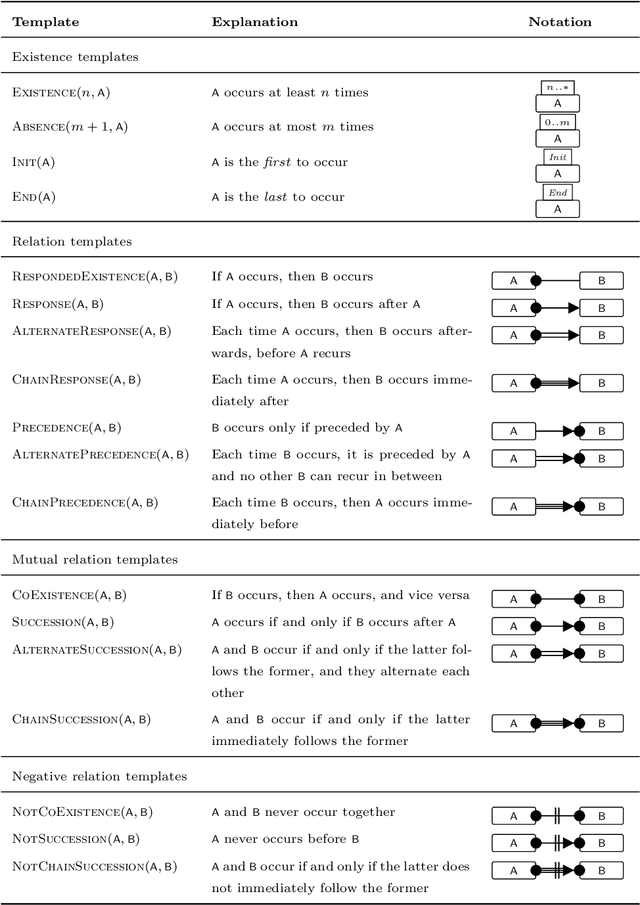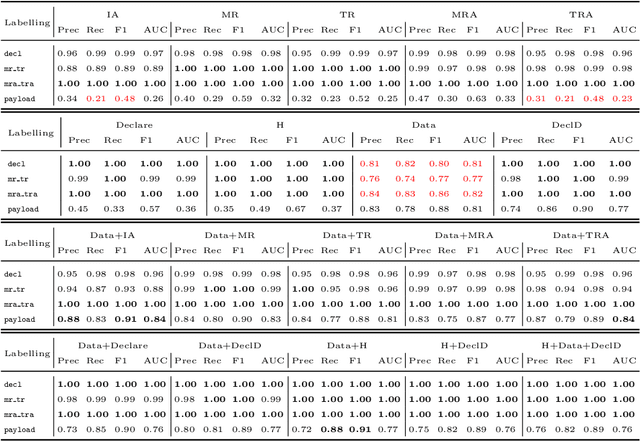Joonas Puura
Exploring Business Process Deviance with Sequential and Declarative Patterns
Nov 24, 2021



Abstract:Business process deviance refers to the phenomenon whereby a subset of the executions of a business process deviate, in a negative or positive way, with respect to {their} expected or desirable outcomes. Deviant executions of a business process include those that violate compliance rules, or executions that undershoot or exceed performance targets. Deviance mining is concerned with uncovering the reasons for deviant executions by analyzing event logs stored by the systems supporting the execution of a business process. In this paper, the problem of explaining deviations in business processes is first investigated by using features based on sequential and declarative patterns, and a combination of them. Then, the explanations are further improved by leveraging the data attributes of events and traces in event logs through features based on pure data attribute values and data-aware declarative rules. The explanations characterizing the deviances are then extracted by direct and indirect methods for rule induction. Using real-life logs from multiple domains, a range of feature types and different forms of decision rules are evaluated in terms of their ability to accurately discriminate between non-deviant and deviant executions of a process as well as in terms of understandability of the final outcome returned to the users.
 Add to Chrome
Add to Chrome Add to Firefox
Add to Firefox Add to Edge
Add to Edge